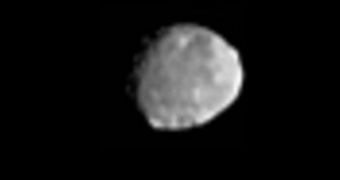Next month, researchers at NASA and the Jet Propulsion Laboratory (JPL) will have an important reason to celebrate, when the Dawn spacecraft will finally reach Vesta, the most massive asteroid in our solar system.
The probe is now scheduled to enter orbit around the large space rock on July 16. According to mission controllers, Dawn will orbit its target for about a year, before leaving orbit and setting on a course for the dwarf planet Ceres.
Both these space objects are located in the Inner Asteroid Belt, which is located between the orbits of Mars and Jupiter. Vesta is the largest object within this belt, and many astronomers believe they know the reason why.
Recent studies of Vesta have demonstrated that the asteroid has a core, a mantle and a crust, all of them solidified. This means that – if given the proper chance – it may have developed into a fully-fledged planet in the early days of the solar system.
But something must have happened to limit its growth, and experts are keen to know what. One of the most important goals of the Dawn mission is to figure this out, and also to take new readings of the asteroid's surface.
“The Dawn science campaign at Vesta will unveil a mysterious world, an object that can tell us much about the earliest formation of the planets and the solar system,” W. James Adams told the media yesterday in a conference.
The expert, who is the deputy director of the NASA Planetary Science Directorate, added that “to study this particular asteroid up-close and personal is a very unique opportunity,” Space reports. Vesta is about 330 miles (530 kilometers) in diameter.
Dawn is currently some 96,000 miles (155,000 kilometers) away from its target, and closing fast. In about three weeks, it will cover the remaining distance, and begin the deceleration leg of its flight.
“Our destination is within sight, and this team is very excited that we're finally closing in on Vesta,” says Dawn project manager Robert Mase, who holds an appointment at the JPL, in Pasadena, California.
The spacecraft he and his team manages launched back in September 2007, and has since traveled more than 1.7 billion miles (2.7 billion kilometers).
“The Dawn team is going to, over the next year, enable us to get a bird's-eye view of this new world. Until now, it's only been a fuzzy blob. The Dawn team will paint a face on that fuzzy blob,” Adams added, quoted by Space.

 14 DAY TRIAL //
14 DAY TRIAL //